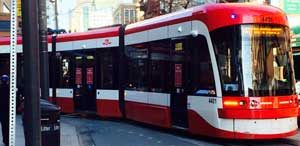Young people are heading to city centres, abandoning the suburban life of spreading lawns and wide driveways that their parents embraced, according to urban designer Ken Greenberg.
Following the Second World War the North American dream was to have a home, land and a car. The development of highways and the automobile made it easy to do, Greenberg told the Oct. 26 meeting of the Toronto Dollar Supper Club.
Today, the suburban dream is changing to one of Downtown living allowing people to walk to work, entertainment and to socialize with friends. Greenberg’s 2010 book Walking Home talks of that trend.
The post-war dream “was some way of establishing that you had arrived in the world. What we’re seeing now is the replacement of that for a younger part of the population,” Greenberg told the club.
“This competing dream can be expressed simply as being able to live in a neighbourhood where you can walk to buy your groceries … where you have access to transit, where you have access to the things you need in your daily life without getting into an automobile.”
He said more than 80% of Canadians live in a small number of large cities and 50% of the world’s population lives in cities. Toronto’s Downtown is growing at a rate 4 times faster than the rest of the city, Greenberg said, adding that for that reason investment is needed for social and hard infrastructure services.
He said the newly elected federal Liberals are smart to run a deficit, taking advantage of low interest rates, for infrastructure building.
Greenberg said a Pembina Institute think-tank survey “for our part of the world” found that people were willing to live in smaller spaces to have the benefits of living in a neighbourhood where they could access more amenities without having to commute.
Citing an Economist study Greenberg said the average annual number of kilometres travelled in most of the developed world is decreasing. As for people getting a drivers licence, the study found that 26% of those in the 16-34 age group in North America did not have a driver’s licence and most have no intention of getting one.
“This is a remarkable, remarkable change,” said Greenberg, adding that today’s young people are buying two-wheel bikes rather than four-wheel cars.
“We’re now in the early stages of this second paradigm shift which is as powerful, as pervasive as the one we experienced at the end of World War II … It is something that is actually sweeping all of us up.”
Greenberg said that as cities become denser they have to become greener. He said it’s important to create places where people can see each other face-to-face and not through car windows.
With alternative energy sources becoming cheaper, Greenberg said there is a massive shift away from a petroleum economy even to the point that Saudi Arabia is saying it might leave most of its oil in the ground and become a major solar power.
Greenberg said that in his Walking Home book he cites how economic, environment and social forces are contributing to greater urban living.
Greenberg said the Urban Land Institute, a prestigious group of North American developers, stated in 2013 that people buying or renting their dwellings are looking for compact, walkable communities.
He said the Wall Street Journal published a chart showing the number of people who live in walkable neighbourhoods keeps growing “at the expense of auto-oriented suburbs.”
But Greenberg said that while society is succeeding in consolidating population it’s simultaneously failing in the urban spread.
“In this early stage we are both succeeding and failing. We have the old paradigms still operating on automatic pilot. If you go out to the fringes of the GTHA we’ll still see green field development … But we’re also seeing this incredible… consolidation in the 905 areas.”
 TheBulletin.ca Journal of Downtown Toronto
TheBulletin.ca Journal of Downtown Toronto

